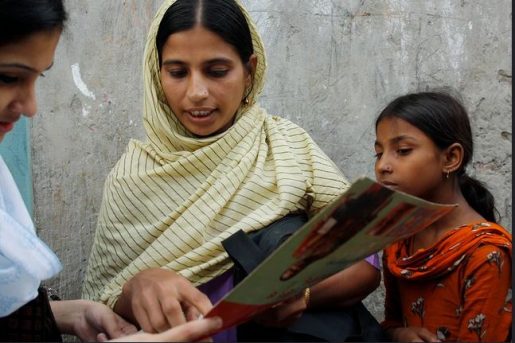Cervical cancer screening in the COVID-19 era
In 2018, the World Health Organization launched an ambitious global strategy to eliminate cervical cancer as a public health problem. The tools for elimination are in our hands: There is an effective vaccine against the virus that causes it –human papillomavirus (HPV); there are effective screening and diagnostic tools for its secondary prevention; and it is one of the most treatable cancers, if detected early.
Yet, cervical cancer is one of the most common causes of deaths for women worldwide. Over 300,000 women die of cervical cancer globally each year. That’s one woman’s life every two minutes due to an entirely preventable disease. Approximately 90% of deaths from cervical cancer occur in low- and middle-income countries that lack the infrastructure and capacity for widespread screening and vaccination.
The scourge of cervical cancer isn’t limited to low-resource settings. Each year in the U.S., more than 13,000 women are diagnosed with cervical cancer and more than 4,000 die. Disproportionately high rates plague areas of the country, with incidence rates in certain census tracts and congressional districts resembling those of some low-income countries.
Socioeconomically disadvantaged racial/ethnic minority women, particularly Hispanic and black women, carry a disproportionate burden of cervical disease.

More than half of the cases of invasive cervical cancer in the U.S are among women who cannot or do not attend clinic-based screening (i.e., in the U.S., a Pap test with or without an HPV co-test). Unfortunately, behavioral interventions such as patient reminders and recalls, patient education, and patient navigation have been largely unable to resolve many of the barriers faced by underscreened women.
The COVID-19 pandemic, and the federal, state, and local policies to curtail its spread, have presented an additional, unprecedented challenge to cervical cancer screening programs. In mid-March 2020, as most U.S. states issued stay-at-home orders, the CDC and other organizations issued recommendations that people delay non-urgent outpatient care.
This had a dramatic impact on cervical cancer screening, which decreased by 90% in the month following the orders compared to 2017-2019 averages. As health systems re-open primary care appointments and resume preventive care visits, it is likely that several challenges, including ongoing COVID-19 transmission, reduced capacity due to competing healthcare priorities, and reduced patient access, will slow the return of clinic-based cervical cancer screening to pre-COVID-19 levels.
How this will impact cervical cancer incidence and mortality in the long-term is unknown, as this will depend on how long clinical services are paused. However, it is certain that underserved populations that are most vulnerable to instability and insecurity will be disproportionately affected.
Self-sample HPV testing holds much promise for being an alternative to clinic-based screening, particularly in the COVID-19 and post COVID-19 eras. Molecular HPV testing is superior to Pap testing for detecting cervical cancer and precancer and is one of the screening tests recommended by the U.S. Preventive Services Task Force.
Ample evidence demonstrates that samples can be collected by either trained providers or by women themselves. Self-sampling is highly acceptable and, for many under-screened women, preferable to undergoing a pelvic exam by a provider.
Finally, commercially available self-testing kits (e.g., Mylab and the EVE Kit) are already being marketed directly to women, a first step toward sustainability and scale-up.
Randomized trials from numerous countries have demonstrated that offering self-sample HPV test kits to underscreened women can dramatically increase their screening participation. In a pre-COVID meta-analysis, primary screening participation rates increased over two-fold in interventions where underscreened women were given the opportunity to self-sample and return their kits to a laboratory for HPV testing.
In the pre-COVID trials, women, of course, had the option to instead attend for clinic-based screening. In the COVID-19 era, this option may or may not be widely available or accessible. Some clinics and health systems have halted clinic-based screening to mitigate the spread of the virus and conserve stretched healthcare resources.
At the same time, many patients and healthcare providers have safety concerns that prevent them from attending in-person visits. In this context, and as more women are becoming underscreened, self-sample HPV testing may be the safest and feasible option.
It’s important to note that technological innovations alone are rarely the sole solution to complex health problems. If we take lessons-learned from other uses of self-testing (e.g., for HIV and colorectal cancer screening), we know that self-sampling alone is unlikely to move the needle toward eliminating disparities. Programmatic strategies to boost participation and follow-up are crucial.
In the healthcare setting, the PRESTIS trial (Prospective Evaluation of Self-Testing to Increase Screening) that we are conducting within the Harris Health System in Houston will establish whether lay patient navigation can be used synergistically with mailed self-sample HPV testing kits to increase primary screening and diagnostic follow-up. Similarly, in the community setting, lay community health workers have shown great promise as an effective implementation strategy.
Going forward, advances toward low-cost, point-of-care testing are imperative for removing major structural barriers to self-sample HPV testing in the post COVID-19 world. Finally, screening for cervical dysplasia is only a first step in the cancer continuum of care and has no value unless women with cervical precancer can follow-up for diagnosis and treatment.
Ensuring equitable access to services along the entire continuum of care is fundamental. As we globally take on the bold challenge of eliminating cervical cancer as a public health problem, scaling up and sustaining screening is an imperative first step.
-By Jane R. Montealegre, Ph.D., MSPH, assistant professor, Department of Pediatrics, assistant director, community outreach and engagement, Dan L Duncan Comprehensive Cancer Center at Baylor College of Medicine and Elizabeth Y. Chiao, M.D. MPH, adjunct professor, Baylor College of Medicine, professor, Department of Epidemiology, Division of Cancer Prevention, professor, Department of General Oncology, Division of Cancer Medicine, MD Anderson Cancer Center



